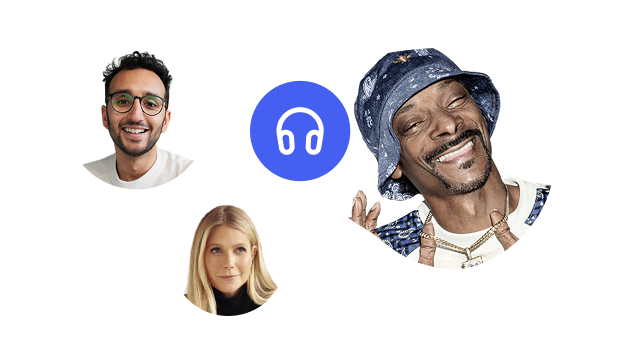For millions of people with dyslexia, reading isn’t just difficult—it can be exhausting. Words blur together, letters seem to jump, and comprehension takes extra effort. What should be a simple activity often becomes a daily struggle that affects confidence, academic performance, and even career growth. But AI voice technology, powered by advanced text to speech tools like Speechify. Let’s explore everything you need to know.
Understanding Dyslexia and Reading
Dyslexia is a neurobiological difference that affects how the brain processes language. It doesn’t reflect intelligence or capability. It simply means reading takes more time and effort. People with dyslexia often have trouble recognizing words automatically, decoding letter patterns, and maintaining reading fluency.
Traditional reading relies heavily on visual decoding, which can overwhelm the dyslexic brain. As a result, reading large amounts of text can cause fatigue, frustration, and self-doubt. That’s why AI voice and text to speech tools are so powerful. They bypass the visual processing difficulties and let users absorb information through listening, a skill in which many people with dyslexia excel.
The Challenges of Dyslexia and How AI Voice Can Help
For people with dyslexia, reading can be slow and frustrating, but AI voice technology is making learning more accessible by turning text into natural, easy-to-follow audio that supports comprehension and confidence. Here’s how AI voice technology is helping combat the challenges of dyslexia.
Slow and Fatigued Reading
For people with dyslexia, reading can feel like running uphill. Each sentence demands concentration, decoding, and re-reading to ensure understanding. Over time, this leads to mental fatigue and discouragement.
Text to speech solves this by transforming visual text into auditory input. Listening allows dyslexic readers to engage with content more fluidly, keeping up with classmates or coworkers without exhaustion. Instead of staring at a page for hours, users can listen to books, articles, or documents at their own pace. The consistent rhythm and tone of an AI voice maintain engagement while reducing eye strain and mental effort. By switching from visual decoding to auditory comprehension, reading becomes not only faster but also more enjoyable.
Difficulty Decoding and Recognizing Words
Dyslexic readers often struggle to connect letters and sounds, making word recognition slow and inconsistent. This decoding difficulty can cause frustration, especially when encountering new or complex vocabulary.
AI voice technology directly addresses this decoding barrier. When users hear words read aloud, the brain connects sound and meaning more efficiently. Over time, listening to text while following along visually reinforces word recognition and spelling patterns. This dual-sensory experience—seeing the word and hearing it simultaneously—helps dyslexic readers build stronger neural pathways for language processing. When paired with synchronized highlighting , as in Speechify, users can track words as they’re spoken, reinforcing pronunciation, rhythm, and comprehension naturally.
Comprehension Difficulties
Even when dyslexic readers manage to get through a page, comprehension can lag behind. So much mental energy goes into decoding words that little remains for understanding the content itself.
Text to speech frees up cognitive energy for comprehension. By offloading the decoding process to AI voices, listeners can focus entirely on meaning, ideas, and context. The natural pacing and tone of high-quality AI voices mimic human speech patterns, making complex concepts easier to grasp. This auditory approach transforms dense or intimidating text into a clear, conversational experience. It allows dyslexic students to engage with academic material, professionals to process reports, and readers of all ages to enjoy books without losing the story’s flow. Listening restores confidence and removes the barrier between the reader and the message.
Low Reading Confidence and Avoidance
Many people with dyslexia develop anxiety or avoidance behaviors around reading. Negative experiences, such as struggling in class or feeling slower than peers—can erode confidence over time. The result is a cycle of avoidance that limits learning opportunities and self-esteem.
AI voice tools help rebuild confidence by creating positive reading experiences. Listening eliminates the frustration of misreading or losing track of words. Users can understand complex material with ease, keeping up with peers and feeling more capable. As success builds, confidence follows. Text to speech also encourages exploration. Dyslexic readers who might avoid print books often rediscover a love for reading when they can listen to stories or articles effortlessly.
Spelling, Writing, and Pronunciation Issues
Because dyslexia affects phonological processing, spelling and pronunciation can also be challenging. Repeated exposure to correct pronunciations and sentence structures is essential for improvement.
AI voice technology provides this exposure naturally. By listening to text being read aloud, users internalize correct word sounds and grammar patterns. Over time, this auditory learning strengthens spelling and writing skills. Many dyslexic learners find that they start recognizing familiar words faster after hearing them repeatedly through text to speech.
Visual Stress and Eye Strain
People with dyslexia often experience visual distortions when reading—letters may seem to move, blur, or overlap. This “visual stress” can lead to headaches, fatigue, and reduced comprehension.
Text to speech removes the visual strain altogether. Listening allows users to bypass the printed page while still accessing the same information. Instead of battling text on a screen, dyslexic readers can sit back, listen, and absorb the material comfortably with AI voices. The result is less stress, more comprehension, and a significantly more enjoyable reading experience.
Falling Behind in School or Work
Dyslexia often leads to gaps in reading speed and workload completion. In academic or professional environments, that can mean missed deadlines or limited participation.
AI voice technology levels the playing field. With text to speech tools like Speechify, dyslexic students can listen to textbooks, assignments, or articles at the same pace as peers. Professionals can catch up on reports or emails during commutes or breaks, turning idle moments into productive time. Because Speechify allows playback speed adjustments, users can learn at a rate that feels both efficient and natural.
Speechify: Making Reading Accessible for Everyone
Speechify is one of the most trusted AI voice tools for dyslexic users, combining realistic AI voices, cross-platform access, and features that enhance reading, learning, and focus. It turns any text, including PDFs, emails, reading, or articles, into natural-sounding audio in over 1,000 voices across 60+ languages, with adjustable playback speeds and highlight tracking to reinforce fluency. Its AI Summaries and AI Quiz tools boost comprehension, while the OCR scanner instantly converts printed pages into readable or spoken text. From studying to working or reading for fun, Speechify empowers dyslexic readers by removing stigma and proving that intelligence is measured by understanding, not reading speed.
FAQ
Can AI voice tools really help dyslexic readers?
Yes. Listening engages different brain pathways than reading, improving comprehension, focus, and retention while reducing fatigue, so AI voice tools like Speechify help dyslexic readers.
Does Speechify work with printed books?
Absolutely. Speechify’s OCR scanner converts photos of printed text into AI voices that can read aloud instantly.
Can text to speech improve spelling or pronunciation?
Yes. Repeated exposure to correct word pronunciation and sentence rhythm from text to speech apps like Speechify strengthens spelling, grammar, and verbal fluency.
Is Speechify useful for students with dyslexia?
Yes. With Speechify, students can listen to textbooks, assignments, and notes, keeping pace with classmates and boosting confidence.
Can adults with dyslexia benefit from Speechify?
Definitely. Professionals use Speechify to stay organized and efficient—listening to reports, articles, and work documents instead of reading them.





